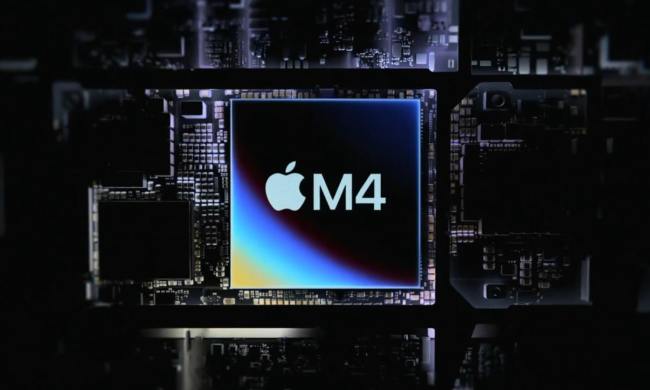“The Gateway M275 XL is an excellent performer that provides the power of a notebook and versatility of a tablet.”
- Very versatile
- solid performance
- Heavy
- keyboard is set back further than it should be
The Gateway M275 XL is an excellent performer that provides the power of a notebook and versatility of a tablet. The flexibility this provides becomes invaluable as you become comfortable with using the unit in tablet mode.
With its Intel Centrino based processor and 802.11b wireless, the M275 XL is both powerful and portable. Useful for both the home and business user, the combination of a Tablet PC and a standard notebook makes this unit something that a wide range of users can appreciate.
Introduction
Gateway’s M275XL is a hybrid machine that transforms from a laptop computer into a Tablet PC. For those wanting to explore the world of Tablet PC’s the Gateway M275XL is a nice bridge between style and functionality.
For a little over $2000 you get Intel’s 1.6GHz Pentium M processor, 512MB DDR SDRAM (2-256MB modules), and a 60GB ultra ATA hard drive. Weighing in at 5.7 pounds and 12.60″(W) x 10.83″(D) x 1.10″(H), this isn’t the smallest or lightest Tablet PC, but considering it’s a full-featured laptop, that seems about right.
Features and Design
Gateway ships the M275XL with the Windows XP Tablet Edition operating system. It also features Microsoft OneNote as well as Microsoft Works 7.0. OneNote is new Microsoft Office 2003 product that allows you to make notations – be it handwriting, typed text, audio, images, or diagrams – in many different applications. Works 7.0 is a scaled down Office-type suite that includes a word processor, spreadsheet, database, and calendar application.
This unit is quite capable with the hardware package mentioned above and becomes even more versatile with the addition of a 24x/10x/24x CD-RW and 8x DVD combo drive, integrated 4-in-1 memory card reader, two USB 2.0 ports, a IEEE 1394 (FireWire) port, VGA port, 14.1″ XGA TFT Active Matrix screen, integrated 10/100 Ethernet adapter and integrated 802.11b wireless networking card.
This is not a gaming machine and the graphics solution is an integrated Intel Extreme Graphics 2. This chipset works fine for normal productivity and multimedia applications, as well as light gaming and we had no problems with it affecting our performance.
The unit offers quite a punch and Gateway has utilized a robust hardware combination in the M275XL that allows the user to utilize the machine for work, multimedia as well as lightweight gaming.
Since its a Centrino, the M275 XL features an integrated 802.11b wireless connection. While we’re seeing many other notebooks include 802.11g, the Centrino hasn’t been upgraded to the higher speed yet.
An attractively styled notebook that will get some looks, the M275XL features a metallic silver outer finish and textured black keyboard area. Gateway has conveniently placed several control buttons on the lip of the monitor as well as the keypad area. These chrome buttons allow the user to control screen orientation (which is useful as a Tablet PC), toggle a software keyboard on or off, adjust LCD brightness, and access Windows Task Manager.
The keypad area houses four one-touch access buttons for email, Internet, help and Windows explorer. The inclusion of the Windows task manager and Windows explorer options are a nice touch, as we frequently accessed these areas during our testing and regular use. This option dramatically reduces the number of required keystrokes.
The M275XL with the screen flipped in Tablet PC mode.
Performance
This unit scored well in Sisoft Sandra 2004 and MobileMark 2002 but got low scores in 3D Mark 2001 due to the Integrated Intel Extreme 2 Graphics. The M275XL scored well below it’s sister unit the Gateway 450XL, as well as the Sony VAIO PCG-Z1AP1 but beat out the 200 XL with a 2347 16-bit score and 2327 32-bit score.
The M275 XL really shines in the CPU benchmark category by soundly beating the competition. Intel has packed the 1.6GHz chip with a 400MHz bus and 1 MB L2 Cache plus other micro architecture features that enable it to score well. Sisoft Sandra 2004 CPU Arithmetic Benchmark reported a great Dhrystone score of 6302 which beats out the Intel P4 2.4 GHz chip and ties the AMD Athlon XP 2000+ 1.67GHz chip. The CPU Multi-Media Benchmark Gave excellent results with a 15181 Integer score and 16752 Floating Point score.
System Configurations:
Gateway 275 XL
Windows XP Tablet Edition, 1.6Ghz Pentium M, 512MB DDR SDRAM 266MHZ, Intel Extreme Graphics 2, Toshiba MK6022GAX 60GB Hard Drive
Gateway 200XL
Windows XP Professional; 1.6GHz Intel Pentium M; 512MB DDR SDRAM 266MHz; Intel Extreme Graphics; Toshiba MK6022GAX 60GB Hard Drive
Sony VAIO PCG-Z1A
Windows XP Home; 1.3GHz Intel Pentium M; 512MB DDR SDRAM 266MHz; ATI Mobility Radeon 16MB; Hitachi DK23EA-60 60GB 4,200rpm
Gateway DS 450 XL
Windows XP Home; 1.5GHz Intel Pentium M; 512MB DDR SDRAM 266MHz; ATI Mobility Radeon 7500 32MB; Toshiba MK4018GAP 40GB 4,200rpm
Handwriting on Your
Laptop
This unit features a rotating hinge on the
LCD screen that allows it to convert into tablet use. Upon first inspection we
were a little concerned about the durability of the hinge hardware but it has
held up during our testing with no signs of weakness. The screen can only rotate
in one direction and thankfully there are highly visible directional arrows to
guide the user.
Gateway supplies the user with a “Digitizer
Pen” for handwriting and includes extra tips for use in tablet mode. The
learning curve with the pen was relatively short and we found ourselves pointing
and clicking with ease in a few short minutes. When not in tablet mode the pen
is housed in the front right corner of the unit. style=”mso-spacerun: yes”>
Handwriting recognition is managed a little
differently than other products you may have used. Instead of teaching the
software how you write the software takes educated guesses at what it sees.
Whether you have perfect penmanship or your writing is often compared to a
doctor’s prescription note, the software does a fairly good job at deciphering
your handwritten input.
Our testing indicated that it correctly
detected our handwriting roughly 80% of the time. The task of helping the software
recognize your poorly written words gets a little easier because it will
identify the word and offer you a list of words that may match what you’ve
written. You simply click it to select the word you intended to write and it
will replace the misidentified word.
Taking Notes
If meetings often result in participants
leaving with a stack of paper notes that then must be sorted through and
analyzed, utilizing Windows Journal and the Gateway Tablet makes note taking
much simpler. All you need to do is open a digital piece of paper via Windows
Journal and jot down your thoughts or ideas and either keep them in handwritten
form or convert it to text. Since these notes are already in digital form,
sharing them with other participants is very easy and efficient.
Another note taking feature is the Sticky
Note application that allows you to make quick notes on an existing document
(Word, Excel, PowerPoint) and file for later use or for someone else’s
reference.
Lastly, the Snippet application enables the
user to make notes on a Web page and then forward it on to another user. We
found this innovative application to be a very useful tool.
The pen interface has opened up new
possibilities in the laptop world and we expect there are more applications on
the way that will enable the user to expand their productivity.
Use and Testing
Boot time is fast and the onscreen prompts kept the initial setup time minimal. We did have a complaint with the cooling fan as it was noisy and distracting when compared to other units tested.
This unit scored well in Sisoft Sandra 2004 and MobileMark 2002 but got low scores in 3D Mark 2001 due to the Integrated Intel Extreme 2 Graphics. The M275XL scored well below it’s sister unit the Gateway 450XL, as well as the Sony VAIO PCG-Z1AP1 but beat out the 200 XL with a 2347 16-bit score and 2327 32-bit score.
The M275XL really shines in the CPU benchmark category by soundly beating the competition. Intel has packed the 1.6GHz chip with a 400MHz bus and 1 MB L2 Cache plus other micro architecture features that enable it to score well. Sisoft Sandra 2004 CPU Arithmetic Benchmark reported a great Dhrystone score of 6302 which beats out the Intel P4 2.4 GHz chip and ties the AMD Athlon XP 2000+ 1.67GHz chip. The CPU Multi-Media Benchmark Gave excellent results with a 15181 Integer score and 16752 Floating Point score.
Intel’s Centrino Mobile technology has made significant improvements in battery life. Features such as intelligent power distribution and SpeedStep Technology dramatically optimize application performance and power usage. These improvements are evident as the unit performed well in MobileMark 2002 with a battery life of 2 hours 24 minutes and a performance rating 146. The upgrade to the optional second battery pack would give the user over 5 hours of use.
The M275XL features an integrated 4-in-1 media card reader.
With the M275XL being a hybrid of a notebook and Tablet PC, it shares the strengths of both. The unit allows you to do most functions you can on a regular laptop computer but adds the extra portable usability of a tablet.
For instance, if you have a wireless network and like to sit in bed or on the couch and browse the Web, a regular laptop can be tough to navigate with. Enter the flip screen: just rotate the screen to Tablet PC mode and you can browse the Web with the Digitizer Pen. Our experience with pen-based browsing was great. It was more comfortable and following links was as simple as just tapping the hyperlink. Of course, if you want to type during your browsing, you may want to go back to notebook mode since the soft keyboard may slow you down.
Conclusion
The Gateway M275XL is an excellent performer that provides the power of a notebook and versatility of a tablet. The flexibility this provides becomes invaluable as you become comfortable with using the unit in tablet mode.
With its Intel Centrino based processor and 802.11b wireless, the M275XL is both powerful and portable. Useful for both the home and business user, the combination of a Tablet PC and a standard notebook makes this unit something that a wide range of users can appreciate.










